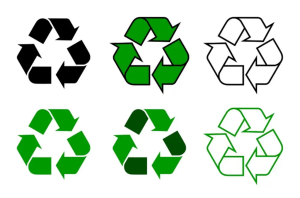Jeanine Coetzer, Senior Associate and Zama Buthelezi, Partner, at Spoor & Fisher, says consumers increasingly want to know the origins, composition, and environmental impact of their purchases. In response, the market has seen a surge in goods, services, and businesses claiming to meet this demand – so-called green claims.
Understanding Green Claims
Green claims are environmental statements suggesting that a product, service, process, brand or business, benefits the environment or is less harmful to it.
These green claims can:
• Expressly state or imply that a product has a positive environmental impact, is less damaging than previous versions, or is superior to competitors in this regard.
• Address the sourcing of materials, production processes, packaging, transportation, use, or disposal of goods.
• Appear as statements, symbols, graphics, logos, colours, or even product brand names.
• Be found on advertising and other communication channels.
Green claims should accurately describe a product, service, process, brand, or business’s impact without hiding or distorting essential information.
Spotting Misleading Green Claims: Greenwashing
Misleading green claims occur when businesses exaggerate or omit crucial information to give the impression that their products, services, processes, brands, or overall operations are more environmentally friendly than they actually are. Making misleading environmental claims is referred to as ‘greenwashing’.
The proliferation of ‘green stories’ and environmental claims can overwhelm and confuse consumers, making it difficult for them to distinguish credible environmental claims from those that are merely greenwashing.
Current Landscape Of Green Claims
Currently, many labels and advertisements are dominated by company-specific environmental claims about products being ‘natural’, ‘green’, ‘eco-friendly’, ‘biodegradable’, or ‘recyclable’, all of which are lacking consistent or rigorous standards. Recent reports indicate that approximately 42% of consumer websites reviewed contained exaggerated, false, or deceptive green claims.
The Risks Of Misleading Environmental Claims
Any false or unsubstantiated green claims can attract scrutiny from regulators – the consumer watchdogs. It can also invite potential litigation from the likes of competitors, customers, or consumer advocacy groups.
Beyond immediate legal challenges, the erosion of consumer trust poses a significant long-term threat. For example, Millennials and Gen Z consumers, who wield substantial influence through social media, actively denounce greenwashing and deride brands perceived as disingenuous. This negative publicity can tarnish reputations and undermine decades of brand equity.
Brands Under Scrutiny: Meeting Evolving Consumer Expectations
A brand represents a consistent promise to fulfil the needs of the purchaser. Historically, since the advent of the first trade marks, brands have been a symbol of predictable and repeatable quality. Nowadays, consumer needs have evolved to extend beyond the functional aspects of a product to include holistic, emotional and psychosocial expectations. Brands have become symbols of the values of the brand owner.
Despite this, consumer confidence in brands is waning, exacerbated by challenges in environmental claims. Kantar’s 2023 Global Sustainability Sector Index revealed that over half of all consumers think that false or misleading sustainability claims are made in relation to brands across all industries.
A Path To Authentic Sustainability: Building Trust And Value Through Genuine Eco-Friendly Practices
Brand owners should not shy away from sustainability efforts despite the existence of greenwashing. The key is to reflect the eco-friendliness of a brand honestly and transparently. Brands must clearly define the brand-owners’ response to the sustainability revolution and align with changing consumer values.
Authentic sustainable practices have enormous potential to influence the purchasing behaviours of eco-conscious consumers. If done right, signifying sustainability contributes to brand value. The 2023 Kantar Global BrandZ Top 100 shows that sustainability contributed $193 billion to the top brands. Brands rating highly on the Kantar Sustainability BrandZ Index grew in value by 31% year-on-year, outpacing the average for the Top 100 Most Valuable brands.
Regulatory Framework In South Africa: Governing Green Claims
While South Africa lacks a dedicated statute governing green claims, several key laws and regulations apply:
• Consumer Protection Act 68 of 2008: Prohibits false, misleading, or deceptive representations about goods or services.
• Appendix G to the Code of Advertising Practice: Provides specific guidance on environmental claims in advertising.
• Standards Act 8 of 2008: Governs the South African National Standards (SANS), including SANS 14021 and SANS 1728, which outline requirements for environmental claims and marking and identification of degradable plastics.
Consumer Protection Act 68 Of 2008
Among other things, the Consumer Protection Act (CPA) prohibits any false, misleading, or deceptive representations regarding goods or services. This includes falsely stating or implying attributes, performance characteristics, benefits, qualities, or approvals that products do not possess, or misrepresenting their standards, grades, or models.
If found by the National Consumer Commission to have made false, deceptive or misleading representations, businesses may face administrative penalties or criminal charges related to falsification of labelling.
Advertising Regulatory Board And The Code Of Advertising Practice
The Advertising Regulatory Board (ARB) is a non-profit company in the advertising industry, that administers the Code of Advertising Practice (the Code). The Code defines an ‘advertisement’ broadly as any visual or aural communication aimed at promoting goods, services, or causes, including promotional content on displays, menus, labels and packaging.
The Code prohibits advertisements containing misleading statements or visual presentations (images or symbols), including those that might mislead consumers directly or indirectly through omission, ambiguity, inaccuracy, exaggerated claims, or otherwise. Appendix G of the Code specifically addresses environmental claims in advertisements.
When evaluating a potential breach of the Code based on an environmental claim, the ARB will likely consider whether the claim misleads or is likely to mislead consumers, is untrue, unsubstantiated, or breaches the Code. Therefore, it is crucial for a company to provide documentary evidence supporting its green claims and to present them in a context that allows consumers to understand their basis.
Consumers or competitors can lodge complaints with the ARB regarding misleading green claims. The ARB provides a swift and cost-effective resolution compared to the National Consumer Commission. The ARB’s rulings carry weight, at least amongst its members, potentially resulting in the withdrawal from the market, of misleading advertising campaigns or packaging.
Standards Act 8 Of 2008 And South African National Standards
The Standards Act 8 of 2008 establishes a framework for standardisation and quality assurance in South Africa through the South African Bureau of Standards (SABS). The SABS is responsible for developing, promoting, and maintaining the South African National Standards (SANS). These standards cover products and services across various sectors affecting public safety, health, or environmental protection.
The SABS has published a number of voluntary national standards, based on international standards, that could be used to determine whether a green claim is misleading.
Significance Of SANS In Environmental Claims
In the context of environmental claims, SANS 14021 is particularly relevant. It mirrors ISO 14021 and provides guidelines for self-declared environmental claims made by businesses. These claims encompass statements, symbols, and graphics that indicate an environmental aspect of a product, a component, or packaging.
The standard outlines twelve selected claims that represent terms commonly used in green claims, such as recyclability and recycled content, each with defined qualifications for their use. It also establishes a general methodology for evaluating and verifying self-declared green claims and specific evaluation and verification methods for the selected claims, like recyclability and recycled content.
Regulation of Degradable voluntary standard is SANS 1728 pertains specifically to the marking and identification of degradable plastics. This standard requires that manufacturers claiming that their plastic packaging is degradable must subject the packaging to the relevant testing and certification requirements. Interestingly, despite the existence of SANS 1728, at the time of writing this article, there are no plastic products in South Africa certified by the SABS as being compliant with the requirements of SANS 1728.
FAQs Regarding Specific Environmental Claims
How do I ensure that an environmental benefit claim is not misleading?
The more general a claim is, the more difficult it is to substantiate.
Avoid using environmental claims that are vague or non-specific or broadly imply that a product is environmentally beneficial or environmentally benign. Vague claims that a product is ‘environmentally safe’, ‘environmentally friendly’, ‘earth friendly’, ‘non-polluting’, ‘green’, ‘nature’s friend’, or ‘ozone friendly’ may not be used – they are inherently misleading (SANS 14021 and SANS 1728) because they represent that a product or service offers general environmental benefits without any certification against an objective standard. The truth is, however, that no product or service can offer such an unqualified environmental benefit. No matter how small it may be, all products and services exert adverse impacts on the environment throughout their life cycle. Thus, vague and non-specific claims can neither be verifiable nor accurate.
Appendix G to the Code provides that advertisements should not contain vague, incomplete, or irrelevant statements about environmental matters, nor should they impair public confidence in the efforts made by the business community to improve its ecological standards. Advertisements containing general statements such as ‘environmentally friendly’ or ‘ozone friendly’ or ‘green’, or graphics or symbols designed to convey a similar environmental message, are not permitted unless qualified by a description of the benefit conferred, e.g., ‘ozone friendly – free from CFCs’ (but SANS 14021 and SANS 1728, specifically prohibit the use of ‘ozone friendly’ claims).
Presently, ‘sustainability’ is a term that has many implications: it imparts different interpretations to different stakeholders. The different aspects of sustainability are highly complex and still evolving and there are currently no definitive methods for measuring sustainability or standards against which sustainability claims can be verified. It is for this reason that claims related to sustainability may not be made (SANS 14021 and SANS 1728). Examples of sustainability claims which are not allowed include, ‘this paper product is made from sustainably managed forest’ or ‘this product promotes sustainable development’.
Can I use signs or symbols to make environmental claims?
Appendix G to the Code provides that environmental signs or symbols used in advertising should clearly indicate their source and should not imply official approval.
When a self-declared environmental claim is made, the use of a symbol is optional. SANS 14021 directs that claims must be presented in a manner which does not imply that the product is endorsed or certified by an independent third-party organisation when it is not.
Images intended to denote natural characteristics may be used only if there is a direct and verifiable link between the object of the image (such as a plant, leaf, tree, flower, etc.) and the benefit claimed (SANS 14021).
Specific Symbols – The Mobius Loop
Often specific symbols are used to indicate environmental friendliness because they are already widely used or recognised. This should not be taken to imply that environmental claims represented by these symbols are superior to other environmental claims.
The Mobius loop is an example of such a widely recognised symbol. The Mobius loop has the shape of three twisted chasing arrows forming a triangle. Some examples of the form of the Mobius loop are shown here:
Examples of the Mobius loop symbol used for recyclable and recycled content claims:

SANS 14021 contains detailed requirements concerning the use and applicability of the Mobius loop.
In Summary
Authentic sustainable practices have enormous potential to influence the purchasing behaviours of eco-conscious consumers and signifying sustainability can contribute to the value of a brand. However, it is important for green claims to be credible. All statements made in advertising and on labels and packaging of products, must be accurate, meaningful to the consumer and be based on recognised scientific standards and principles. Brand owners must ensure that green claims can be substantiated with evidence. Transparency is key – claims must be both factually supported and credible to consumers.
If necessary, take expert guidance to prioritise and communicate environmental claims effectively in product information. The content is informational only and does not constitute legal or professional advice.
SPOOR & FISHER
www.spoor.com










